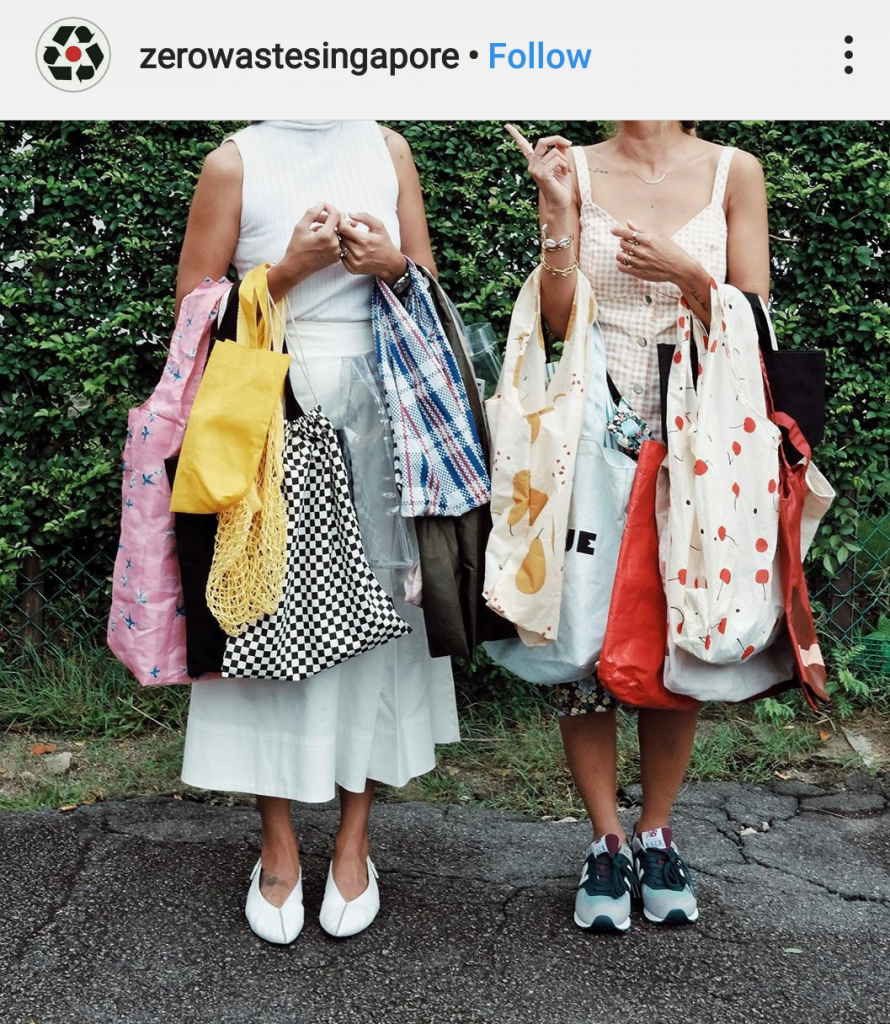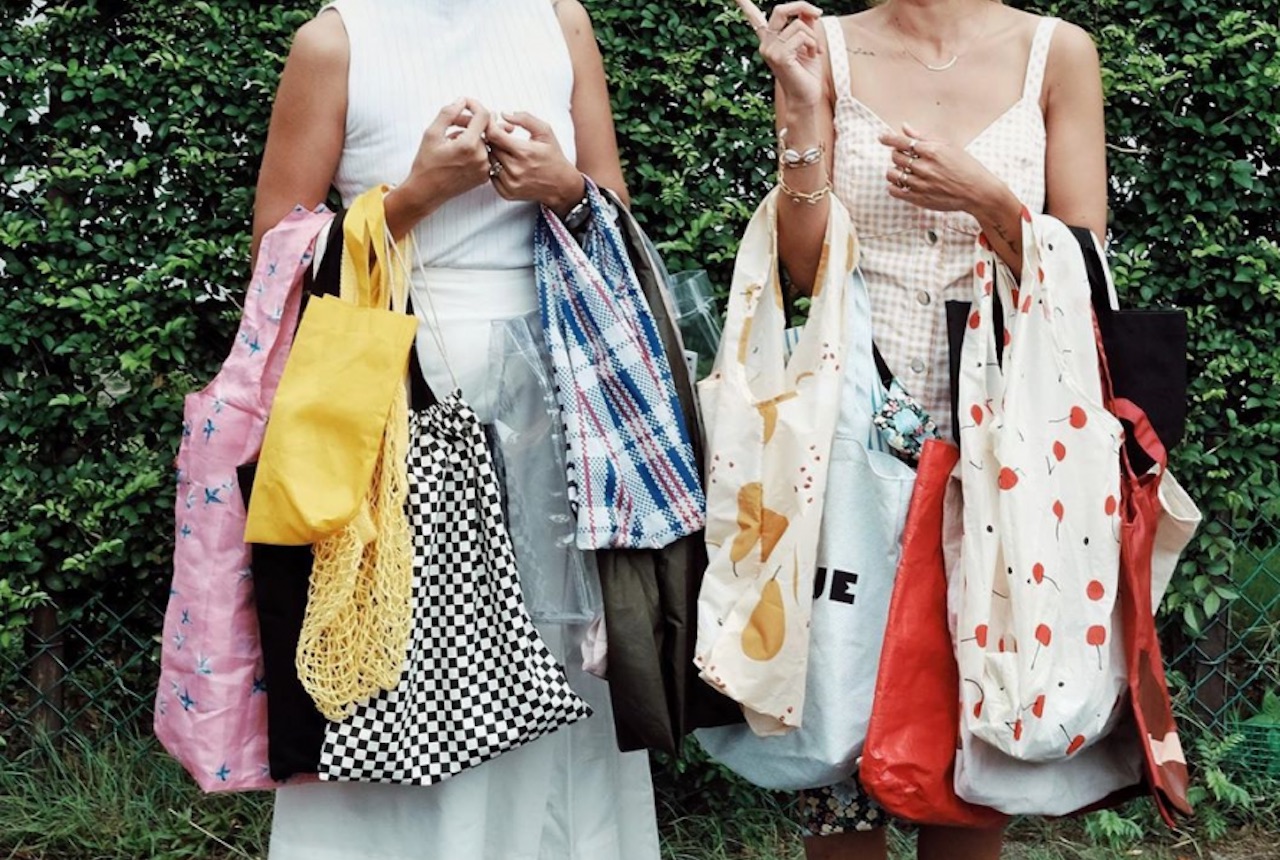Going green has become somewhat of a fad lately, and it seems like every other day that a new Instagram page focusing on ‘sustainability’ or being a ‘budding eco-warrior’ crops up.
As someone currently in the midst of self-educating about environmental issues, slowly starting to incorporate small eco-friendly actions into my daily life, the sudden influx of individuals on the internet striving towards the very same goal is actually encouraging.
But these green accounts are unfortunately still extremely niche, and they aren’t what people think of when they hear the phrase “social media influencer”. When people hear the term “influencer”, perhaps most immediately think of the big names: those of Andrea Chong or BellyWellyJelly fame. For some, maybe a couple of personal friends or acquaintances pop up too, along with the faint inkling of them posing with a pair of Sudio headphones or promoting Ezbuy discount codes.
For mainstream social media influencers, their income hinges entirely on their ability to: 1) secure a sizable audience, and 2) sell a product or a brand well. After all, the job of an influencer is to influence people to buy products and services—essentially feeding the hungry capitalist machine that we all love to hate and hate to love.
Accordingly, brands send them an inordinate amount of press gifts and packages to feature—all neatly wrapped in paper, boxes, and single-use plastics. The volume of products that some of these influencers receive is allegedly so overwhelming that, despite their best efforts, some still go straight to the bin.
It’s obvious that the influencer lifestyle is inherently unsustainable, but why are we even having this conversation?
Recently, I’ve observed a rise in the number of #woke influencers and social media personalities actively trying to align themselves with the sustainability movement, and spreading a more eco-positive message. But do they wrangle with the ethical dilemmas behind certain business decisions? And how do they toe the line between being business-savvy and promoting a message of sustainability?
Brenda has done a variety of lifestyle-themed vlogs over the years, but it’s more recently that there has been a subtle shift towards promoting a more sustainable message. Since the start of this year, she’s been pushing out content that encourages more conscious consumption habits. For example, she’s largely replaced her previous staple of fast-fashion hauls with thrift hauls instead.
Then there’s Aarika Lee, marketing director and copywriter by day, musician by night. A full-time wife and a mother to two lovely children, she’s begun using her platform to talk about issues ranging from environmental conservation to single-plastic use and ethical consumption.
Recently, she partnered BYO Singapore for their Bring Your Own Bag (BYOB) campaign, which is in support of NEA’s nationwide “Say Yes to Waste Less” 2019 campaign.

For both women, it seems like a combination of self-education and the people around them being more environmentally-conscious was what provoked them to start making small changes in their own lives. Naturally, it follows that the content they produce is slowly morphing to reflect this change.
Both Brenda and Aarika stress that there are a multitude of small and simple actions that influencers can take to reduce their environmental footprint.
Minimising the sheer volume of waste produced from PR packages and the products they yield, is a pretty low hanging fruit. (Even Andrea Chong, the darling of the local influencer scene, has spoken out about it in an online interview.)
Both women expressively tell me that when they communicate their concerns with brand members about the wastefulness and excessiveness of packaging, the managers are usually extremely respectful and understanding. Most take the hint, and most of the products now come in bare-bones packaging without all the fuss and frills.

“Ultimately, brands care about the bottomline, so you’re actually saving them money when you tell them that these are things that I don’t need, so please don’t send them to me,” Brenda says.
At times, however, she’s had to firmly tell brands who don’t comply with her requests that she’s not going to give their products any airtime, no matter how pretty the box it comes in is.
Other than working to reduce waste, mainstream influencers who are looking to be more sustainable can work towards uplifting business with sustainable and ethical practices.
For example, Brenda has worked with The Kint Story to create a curator’s collection, selling her own pre-loved clothes on the online thrift store which aims to encourage a “slow fashion revolution” as a substitute for fast-fashion. She tells me that she has also reached out to brands like Swapaholic (as its name suggests, it’s a clothes-swapping concept which seeks to minimise waste produced by fashion), helping them advertise their platform as a way of supporting the cause.

Both impressed upon me how brands tend to be very respectful whenever the creator reaches out to explain their perspective, and how it’s really not too difficult to open this channel of communication.
This is the most prominent and repeatedly-stressed message over the course of both conversations.
Aarika argues that in Singapore, it’s exceedingly difficult to go completely zero waste. And we do need to acknowledge that, unless we go off to start our own hippie commune, living in a modern society like Singapore means that almost everything that we do will be invariably leave a carbon footprint. And for the majority of us, it genuinely almost impossible to go about your daily life without consuming (and therefore, polluting).
As the influencers I’ve spoken to have pointed out: to hold ourselves—and everyone else—to an impossible gold standard is at once impractical and alienating.
“Sometimes it feels like you need to be able to check certain boxes, a certain standard that you have to reach in order to be able to call yourself ‘eco’ or ‘sustainable’,” Brenda explains.
And when you fall below the mark, people call you out for it.
“[The other day,] my professor gave me a foldable, rubberised metal straw and I thought it was really cool and was talking about it [on social media]. The next day, I posted a photo about a shoot I did with Uniqlo, I had one or two comments being like ‘Why the hell are you working with Uniqlo?!
“I made sure to reply to the comment publicly explaining that, ‘Hey chill, I can’t thrift for underwear, nor can I thrift for absolute basics.’ I’m still a member of society, I’m still going to have to buy stuff.”
Brenda tells me she genuinely understands why people “raise their eyebrows” when she works with brands that are not completely ethical. But it frankly frustrates her when she’s trying to make some positive change but she’s being “punched down” when she does not completely abide by all the ‘rules’ of environmentalism.
In the same vein, Aarika argues that by using her voice to amplify how easy it is to weave in minute lifestyle changes, small steps that everyone can get behind, it’s going to be way more impactful than say one or two individuals going completely vegan or zero waste.
Candidly, she admits that unless a 100% sustainable eco-friendly company can pay her the same amount to do a shoot with them, she doesn’t see why she would have to say no to these other opportunities of working with big-name brands like Uniqlo.
While Aarika considers herself lucky enough not to have received this degree of backlash, she shared that she’s definitely had followers pose questions like asking for the sustainability report of the specific brand that she’s promoting, or whether it happened to have a eco-conscious line of products they could support instead.
“To me, I’m grateful for them asking these questions. Even though I do try to make it a habit to ask all these questions myself, sometimes I really just forget!” Aarika reflects.
She adds that maybe we should think of sustainability as something more like a pyramid, where everyone’s currently on different ‘tiers’; some are at the level where they cut out plastic straws from their life. Perhaps the next tier can be cutting out all single-use plastics from their lives. At the pinnacle, you have the hardcore zero-waste eco warriors.
“But the point is, we should always congratulate and encourage people for making even just one step ahead.”
I understand that there’s been a lot of cynicism over people jumping onto the hype train just because it’s now fashionable to use silicone keep-cups and metal straws.
Early this year, H&M launched their Conscious Collection, amidst a smattering of varied responses; just earlier this month, Zara made the public commitment of having 100 per cent of its cotton, linen and polyester be more sustainable, organic or recyclable by 2025.
While it’s great that companies are finally paying attention and responding to what conscious consumers want, I can’t help wondering to myself: how much is this going to help, really? Is this too little, too late?
If anything can pierce this cloud of cynicism, it’s listening to Aarika talk about her children.

“And [my daughter] Zola Mae is the biggest plastic-straw nazi. She’ll even chide her grandparents when they reach for plastic straws [in eateries]. My kids are even more of an eco-warrior than I am.”
“They give me hope for the future,” she tells me, smiling.
And in the moment, I can’t help but agree.





